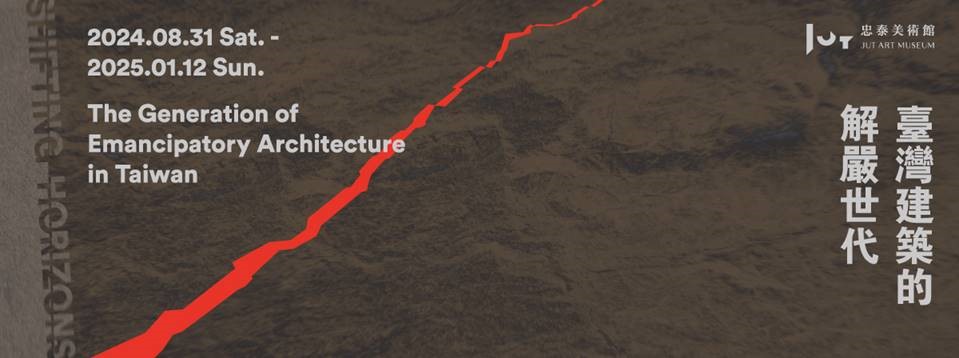The Generation of emancipatory architecture in Taiwan

Shifting Horizons: The Generation of Emancipatory Architecture in Taiwan
Research and Curatorial Team Lead: Shu-Chang Kung
Research and Curatorial Team: Chun-Hsiung Wang, Tseng-Yung Wang, ”, Nancy Lin, Wen-Liang Kuo, Wei-Hsiung Chan, Ray Chu, Shan-Shan Huang, Yen-Hsiu Chen
The official lifting of martial law in Taiwan on 15 July 1987 marked a major milestone in Taiwan’s democratization, and a period of great societal change ensued. Nevertheless, the change wasn’t made overnight. Striving to shake off their shackles and formulate their arguments, the fields of philosophy, literature, music, film, and art had been challenging the social norms as early as the 1970s, whilst the great achievement of architecture must be accomplished with concerted efforts of the multitude. Encompassing diverse expertise, architectural culture is indissolubly linked to the politico-economic milieu of a society. In this sense, of what significance is the “lifting of martial law,” as a historic turning point in the societal change, to the development of architecture in Taiwan? Besides, what crucial changes in Taiwan’s architecture have proliferated in the post-martial law era?
The Jut Art Museum has long been considering and exploring issues about urban architecture. This exhibition invites Shu-Chang Kung as the curator. A research team comprising Tseng-Yung Wang, Kwang-Tyng Wu, Wen-Liang Kuo, Wei-Hsiung Chan, Ray S. C. Chu, Chun-Hsiung Wang, and Nancy Fong-Hui Lin works with the team from the Jut Art Museum in organizing the exhibition, seeking to collate the changes and landmark events in the three-decade development of Taiwan’s architecture from 1980 to 2010, so as to grasp how Taiwan’s architecture has evolved to date. This exhibition uses “the generation of emancipatory architecture” to describe the generation of architects born in Taiwan in the years around 1963 and completed their academic training in architecture around the lifting of martial law in 1987. Focusing on the unorthodox styles of “discontinuities” that find expression in the works or actions of these architects, the exhibition not only gives a vivid portrayal of this generation from the aspects of display, media, and design, but also probes into the new values embodied in this generation and the resultant emancipatory power that has substantially transformed Taiwan’s architecture.
Was such collective emancipatory power inevitable, or was it accidental? Did the drastic societal change afford this generation of architects the opportunity to brave the changing world and strive for freedom and liberation that unleashed waves of emancipatory power? Or, did these architects open up new horizons of their own free will? The central proposition of this exhibition is neither a political inquiry nor a monument to any specific object. Rather, it is an attempt to outline an initial context by retrospectively collating the relationships between individuals and the changing world, based on which we can understand the fertile and diversified development of architecture in Taiwan.
Main Venue|Jut Art Museum
(No.178, Sec. 3, Civic Blvd., Da’an Dist., Taipei City 106, Taiwan)
Opening Hours|TUE-SUN 10:00-18:00 (Closed on Mondays)
Student Day|Free Admission once on WED (With valid student ID)
Admission|General TWD 150, Concessions TWD 100 (Student, seniors aged 65 and above, and groups of 10 or more), All Pass TWD 299
Free Admission for the disabled and a companion, children aged 12 and under (Concessions or Free Admission upon presentation of valid proof)
